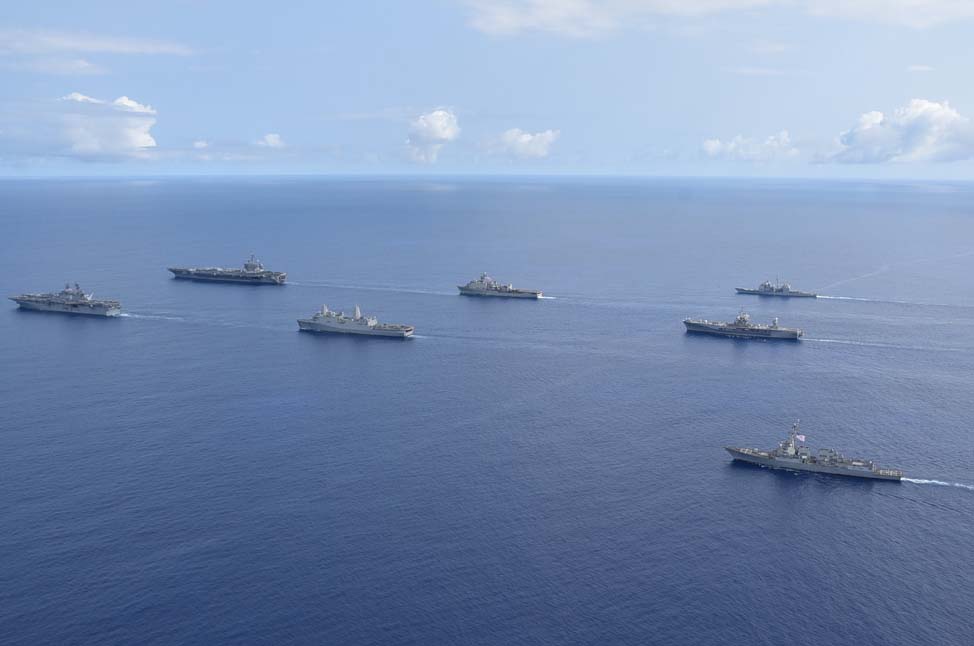News
Johns Hopkins APL Helps Define Next-Gen Naval Surveillance System
Navy ships are outfitted with a vast network of equipment to ensure the vessel and its crew’s safety and navigation accuracy. However, most of the electro-optical (EO) and infrared (IR) surveillance systems used for routine visual identification are mounted to guns, which leads to noncombatants and friendly ships inadvertently placed in the weapons’ crosshairs.
To address this issue and help define a next-generation EO/IR capability for Navy ships, a team from the Johns Hopkins Applied Physics Laboratory (APL) in Laurel, Maryland, led the development of system requirements for the Shipboard Panoramic Electro-Optical Infrared (SPEIR) program. SPEIR acts as a visual surveillance system providing persistent high-resolution image processing to operators from a new set of EO/IR cameras installed above the ship deck.
“SPEIR provides a 360-degree EO/IR suite of sensors to enable passive detection and tracking of maritime threats and significantly improve shipboard situational awareness,” said Rachel Cosgray, a program manager with Naval Sea Systems Command (NAVSEA). “Passive threat detection will allow ships to reduce the use of radars and other active systems that can be detected by adversaries. The improved situational awareness will also help to improve international relations by providing recorded documentation of any actual or perceived incidents at sea.”
Current EO/IR sensors were designed with a single mission, or supporting a specific weapon system, in mind. SPEIR is designed to support a wide variety of tasks for defending the vessel and ship operations, including providing alerts and warnings to various operators and supporting navigation while leveraging state-of-the-art EO/IR technology for high sensor performance.
“SPEIR will bring EO/IR technology into a new paradigm, just like radars and sonars, even as those sensor types continue to evolve in the coming decade,” said John Shelton, APL’s SPEIR project manager. “It will detect threats and generate data to keep the crew informed about what platforms — friendly, enemy and neutral — are in the vicinity of the ship.”
The team worked with the Navy to gather feedback from current warfighters and Navy veterans who are now staff members at the Lab and familiar with these systems. That input is shaping the initial system design.
“It was eye-opening to hear how the warfighters wanted a surveillance system that badly,” said Victoria Heisler, the project modeling lead and a member of APL’s Air and Missile Defense Sector. “People would say, ‘We need this; we want to make this happen.’ That’s what was cool about it for me. In my previous work, there was always a looming question of how a system would be used. But by knowing the end state, and understanding the warfighter’s concerns, we built a system that they want based on their specific inputs.”
Cosgray echoed Heisler’s observation. “The most critical feedback we’ve gotten is the sheer number of uses the warfighter has identified for a system with SPEIR’s capabilities,” she said. “Their eagerness and excitement to have a tool that can support such a wide range of combat and noncombat missions and tasks is a great motivator and helped us identify and target some key functionality early in the project.”
The team recognized the potential of model-based systems engineering (MBSE) and pushed to develop new processes and procedures that would more fully realize that potential.
“We live in a world where systems have to integrate with complex ships, into complex ground-based platforms and onto complex airplanes,” Shelton said. “The systems that we integrate with are not simple like they used to be. Modeling is a much better way than traditional document-based engineering to capture complex interactions between systems. But there’s not much guidance out there on how to write system requirements in a formulaic way using MBSE.”
So, the team pioneered a novel, mathematical way to generate system-level requirements using MBSE.
“We can add definitions and attach objects when they’re in the model, something that you would never be able to do with traditional written requirements, which makes the model a more versatile tool,” Heisler said.
As the team delivers the preliminary requirements, they look forward to supporting the sponsor in other ways as a continued trusted advisor on critical challenges.
“APL has been a key member of the engineering team working to establish firm program requirements for SPEIR,” Cosgray said. “They’ve spearheaded an MBSE approach to defining systems requirements that have been critical to helping the program move forward rapidly while maintaining a very high-quality systems engineering process. These early program contributions from APL will drive a successful transition to program development as we start to work alongside industry over the coming months and years.”
